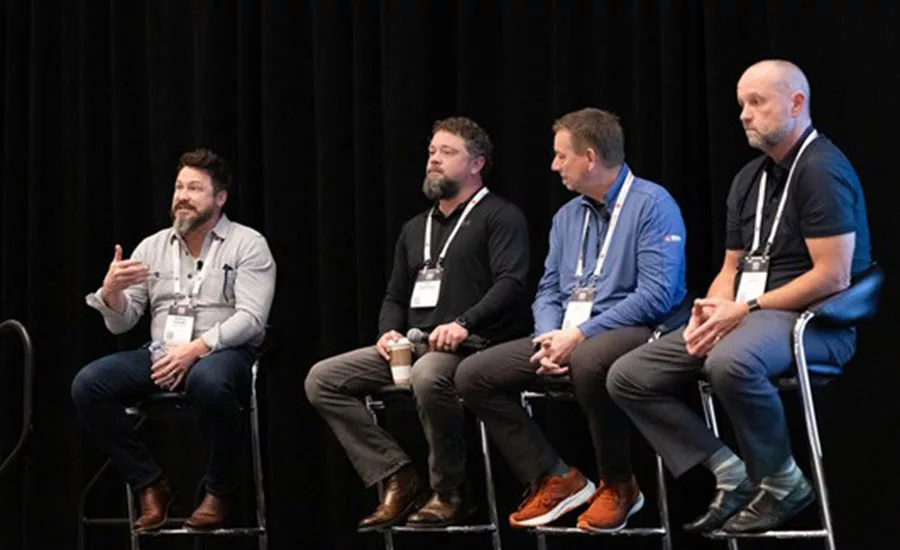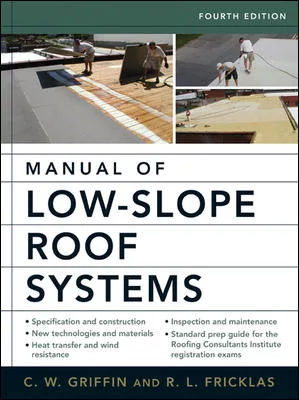Technical Details: Self Adhered Modified Bitumen Systems
Environmental regulations and insurance requirements are playing an increasing role in determining the types of materials and the methods of application that we will employ in the roofing industry in the near future. An example of this is in the introduction of self-adhered modified bitumen systems (SAMBs). These types of systems have been introduced to counter safety concerns associated with hot bitumen and torch applications and environmental issues surrounding solvent-based cold adhesive applications. Relatively new in the United States, this article will discuss the technology behind these systems.
Application Advantages
SAMBs offer several initial advantages for contractors. First and foremost, they appear to address the current safety and environmental issues. The application of these sheets is completed with no heat and no fumes, which makes them relatively safe to apply. They are also environmentally friendly because there are no volatile organic compounds in the material.Another advantage for contractors is the ease of application. No special equipment is required and SAMBs are less labor intensive than many other roof systems. Application is completed in a quick three-step process. The membrane is rolled out over the properly prepared substrate. Once the membrane has been rolled out and adequately relaxed, the SAMB sheets are installed by removing a separator sheet from the roll as the membrane is adhered to the substrate. Subsequent rolls are applied in similar fashion utilizing manufacturer-required overlaps at end laps and seams.
End-lap adhesion can be reinforced by applying manufacturer-approved adhesives or by heat welding. It is also advised that the applied sheet be pressed down with a heavy roller to assist adhesion. A specially formulated primer is traditionally applied over bottom sheets in multi-ply applications. The primer increases the adhesion capabilities of the membrane sheet.
Material Technology
SAMBs were introduced in Europe in the early ‘90s. The initial sheets were manufactured with a ribbon pattern of self-adhering adhesive on the bottom sheet. A top sheet was torch-fused over the bottom layered self-adhered sheet. The heat from the torch softened the ribbed adhesive on the bottom sheet and increased its peel strength by dispersing the adhesive to the proper mechanical points. In subsequent years, the chemistry of the self-adhered adhesive used on the sheets has progressed to the point where top cap sheets can now be applied without torch fusion.Similar application methods have a history in the United States. Self-adhered sheets — or peel-and-stick as they are often called — have been employed with steep-slope underlayment sheets and in some waterproofing applications for a number of years.
These application methods do not stray far from conventional wisdom of modified bitumen sheet adhesion. Modified bitumen sheets are formulated with modified asphalt applied over a reinforcement scrim. Because the bitumen is “built” into the sheet, adherence is conducted by heating the bitumen to an adequate softening point. This was traditionally completed with heated asphalt or by torch fusion on APP sheets and some SBS.
Modified bitumen sheets have been used in the United States for nearly 25 years. In this time the technology has evolved to the point where there are now application procedures other than torch or hot applied. This is primarily because the waterproofing for modified bitumen systems is accomplished by the reinforcement in the sheet, not the bitumen. This differs from the bitumen’s primary purpose in built-up roof systems, which is to act as a waterproofing agent; in modified bitumen sheets it primarily serves as an adhesive agent.
Hot bitumen is used on SBS sheets because of the polymer blend of the membrane, which has a high molecular weight and a softening point in excess of 270 F (132 C). The accelerated temperature of the bitumen heats the sheet and releases the modified SBS asphalt that is engineered into the sheet. Due to the fact that typical SBS blends exhibit high cohesive strength with a low adhesive force, the hot bitumen serves as the catalyst and the engineered SBS serves as the adhesion. A thin layer of applied SBS is all that is required to properly adhere the sheet. This is similar to the process of torch fusing SBS or APP sheets; the intent is to provide flow of the engineered modified bitumen over the substrate.
Because typical SBS blends have low adhesion (or tack) at ambient temperatures, they are not properly suited for self-adhered sheets, which must adhere at temperatures as low as 50 F (10 C). This has prohibited the use of self-adhered sheets. In recent years the technology has advanced to the point where self-adhered sheets are now plausible. A self-adhered polymer — such as styrene isoprene styrene (SIS) — along with other agents and resins are blended into the SBS engineered sheet. This formulation permits the lowering of the blend’s viscosity, which makes it soft enough to achieve good adhesive properties, high long-term peel strength and the proper tackiness to perform at temperatures as low as 50 F (10 C). This advance in technology has permitted two layers of modified sheets to be successfully self-adhered without torch fusing as was required by early incarnations of the sheets.
When they are properly applied, SAMBs do not require the cure time typically associated with cold adhesive applications. These membranes can be applied directly to approved substrates and achieve immediate initial peel strengths to provide watertight laps at ambient temperatures. Most manufacturers require that their self-adhered membranes be applied when ambient temperatures are above 50 F (10 C). Peel strength at the laps is usually achieved in a few days from heating methods such as air, sunlight or any other external source.
Tips to Ensure Success
Most roofing contractors have been conditioned to view new materials and systems with a critical eye. Many unproven and untested materials have passed through this industry on their way to the landfills. Laboratory and condition testing is regulated and rarely duplicates real world conditions.Lack of experience with SAMBs in this country will be an initial deterrent for some contractors. Although some manufacturers have claimed up to 10 years of experience with these sheets, this has largely been in Europe were climate conditions, construction methods and application procedures (and applicators) differ from this country. Also, to meet the fire codes in the United States, the formulations have been altered.
As with all new materials, contractors should investigate the manufacturer’s track record with these materials. Visit application sites, make sure crews are properly trained and start with small projects. Remember: The manufacturers have begun development of SAMBs in response to industry and environmental regulations. The day may come sooner rather than later when these regulations change the materials and methods we now employ.
There are a few things to keep in mind at the application stage. The success of the membrane is based in large part on the preparation of the substrate. The substrate must be free of any moisture. If the membrane is applied over a wet surface or any points where moisture exists, the membrane will not fully bond. Spots of disbondment can transfer throughout adjacent areas and large-scale delamination can occur. Moisture, including dew, should be evaporated by torch or other drying mechanisms prior to application. Do not apply these sheets when precipitation is present.
Cleanliness of the substrate is also of critical importance. Dust, dirt or any other foreign matter that has collected on the substrate must be removed prior to application. Dirt particles, even minute in size, can have an adverse effect on the self-adhered membrane sheets. The particles impede full adhesion and can similarly lead to chronic adhesive and cohesive failures at these points. These parameters may limit the membrane’s application during periods of high winds, particularly on remedial roof projects where dirt and debris from tear-offs is present.
As mentioned earlier, there are also temperature restrictions with these membranes. The material should be applied when the ambient temperature is above 50 F (10 C). In cold temperatures, the self-stick blend becomes increasingly stiff and significantly reduces the points of contact. The result is that the membrane does not readily adhere to the substrate and subsequent attempts to roll and re-roll the membrane into place only traps air between the membrane and the substrate. For the best results, the contractor should apply the membrane in temperature conditions approved by the manufacturer and closely follow the manufacturer’s application requirements.
Conclusion
As with all low-slope roof membrane systems, time and experience will determine SAMB’s fate in the United States. Because SAMBs have been recently introduced, it is my opinion that it is too early to provide any conclusive decisions regarding these systems. The material’s benefits for environmental, insurance and labor considerations will only be subsequent if the system can provide long-term waterproofing capabilities. However, if proven credible in time, SAMBs can certainly be beneficial to improving the contractor’s bottom line.Looking for a reprint of this article?
From high-res PDFs to custom plaques, order your copy today!



